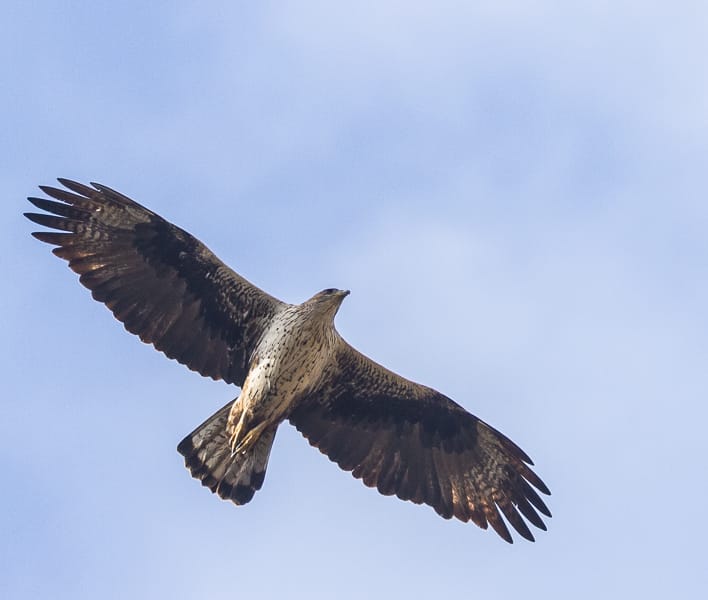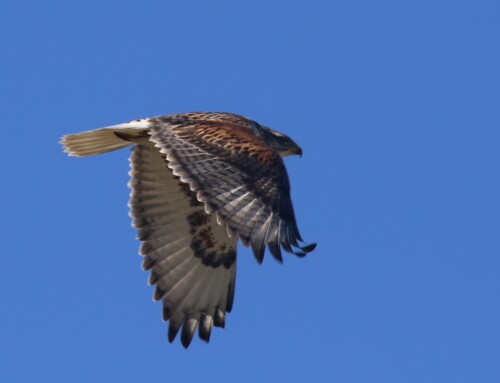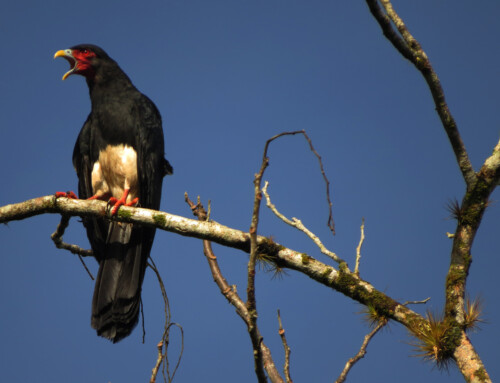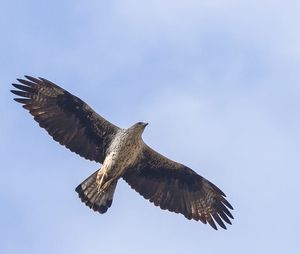 LINKED PAPER
LINKED PAPER
Individual variability of responses to power lines on a long-lived territorial raptor. Marques, A.T., Palma, L., Lourenço, R., Cangarato, R., Leitão, A., Mascarenhas, M., Tavares, J.T., Tomé, R., Moreira, F. & Beja, P. 2022 Ecology and Evolution. doi: 10.1002/ece3.8811 VIEW
Power lines are common structures in landscapes (Fig. 1), so interactions of wildlife with such infrastructures are highly likely. Mortality through electrocution and collision with aerial cables is a common outcome of those interactions. Despite less studied, displacement effects caused by avoidance behaviours have also been described, particularly in birds from open landscapes. These are usually linked to neophobia, a reaction to novel artificial features, or to increased predation risk, as predators such as raptors often use pylons as vantage points (Biasotto and Kindel 2018).

Figure 1 Transmission power lines.
What we studied
Our study focused on the almost exclusively tree-nesting Bonelli’s Eagle (Aquila fasciata) population from southern Portugal. Bonelli’s eagles are long-lived, resident and territorial raptors, highly affected by mortality due to electrocution on electric pylons (Real et al. 2001). We used GPS tracking data from 17 territorial birds to analyse space use of these eagles in relation to proximity to power lines, while controlling for other habitat features. We tested whether the power line network affects the space use of these eagles at (i) population and (ii) individual levels, and (iii) assessed potential drivers of the variability in individual responses. We were particularly interested in exploring potential differences between transmission and distribution power lines. Transmission lines have higher and larger pylons, which do not represent an electrocution risk for raptors but have a higher potential to generate displacement effects, while distribution lines, tend to be smaller and not so prominent, but may have an electrocution risk.
Our findings
Analysis at the population level indicated that eagles increased the intensity of space use in the proximity of power lines (up to 1 km), suggesting an attraction effect (Fig. 2). However, this general pattern was not shared by all the eagles as some showed reduced intensity of space use near power lines, suggesting avoidance behaviour (Fig. 3).
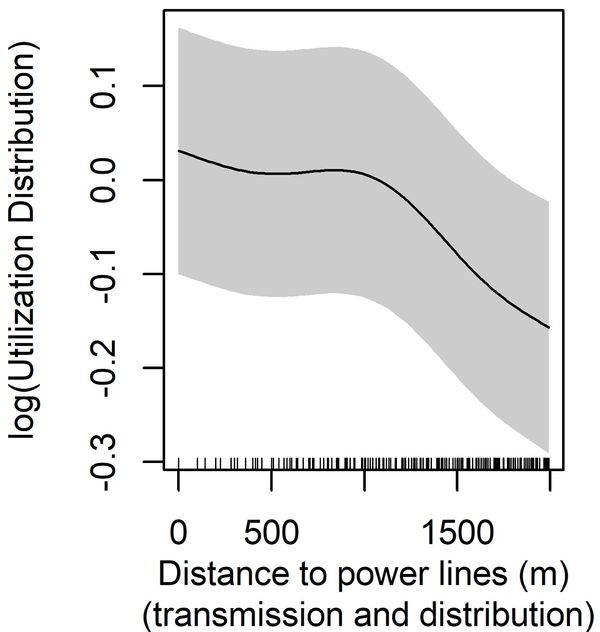
Figure 2 Population-level partial response curves of Bonelli’s Eagle space use intensity in relation to distance to power lines. Shaded areas represent 95% confidence intervals. Ticks on the X-axis represent the location of observations along the predictor.
It is not fully clear why eagles have such contrasting responses to power lines. However, it might be related, at least partially, to the characteristics of the power line grid within eagle home ranges. Our results suggest that eagles attracted to power lines occupy home ranges with a denser network of transmission lines. Transmission power lines are taller and larger, and probably are more suitable to be used by these eagles for hunting, resting or even nesting, as reported for raptors in general (Slater et al. 2020) and observed in Bonelli’s Eagles in our study area. In contrast, the avoidance pattern that we found had never been demonstrated for birds of prey, and the mechanisms behind such behaviour are not fully clear. It is possible that individual idiosyncrasies, the spatial distribution of prey availability, and the availability of natural perches and nesting sites, which we did not include in our models, also play a role. The fact that a few new power lines were built away for known nests might be an additional explanation.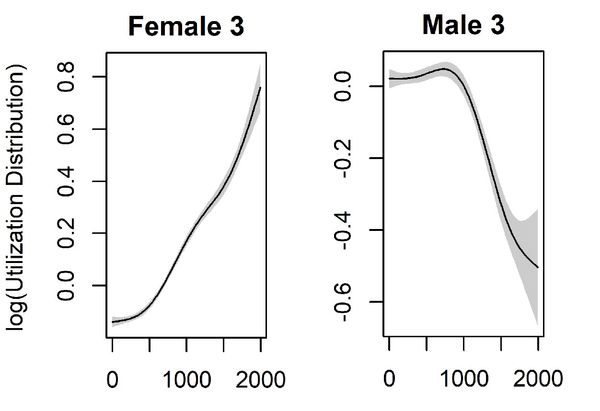
Figure 3 Contrasting individual-level partial response curves of Bonelli’s Eagle space use intensity in relation to distance to power lines. Shaded areas represent 95% confidence intervals.
In conclusion, these contrasting patterns suggest that power lines may affect individuals differently. Eagles attracted to power lines probably benefit from tall and safe vantage points (ideally to hunt, rest, surveillance and even nesting), but may have a higher risk of mortality. Conversely, eagles avoiding power lines may be experiencing displacement effects and potential habitat loss caused by such structures. These results reinforce the need to understand inter-individual variation in behavioural traits within a population when assessing and mitigating impacts of anthropogenic infrastructures.
References
Biasotto, L. D. and Kindel, A. 2018. Powerlines and impacts on biodiversity: a systematic review. Environmental Impact Assessment Review 71: 110-119. VIEW
Real, J., Grande, J. M., Mañosa, S. and Sánchez-Zapata, J. A. 2001. Causes of death in different areas for Bonelli’s Eagle Hieraaetus fasciatus in Spain. Bird Study 48: 221-228. VIEW
Slater, S. J., Dwyer, J. F. and Murgatroyd, M. 2020. Conservation Letter: Raptors and overhead electrical systems. Wilson Journal of Raptor Research 54: 198-203. VIEW
Image credit
Top right: Bonelli’s Eagle Aquila fasciata © Andreia Dias.
If you want to write about your research in #theBOUblog, then please see here.


